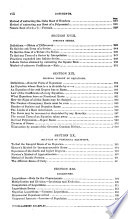 | Elias Loomis - Algebra - 1855 - 356 pages
...minus, (55.) The whole doctrine of multiplication is therefore com prehended in the following ROLE. Multiply each term of the multiplicand by each term of the multiplier, and add together all the partial products, observing '.hat like signs require + in the product, and... | |
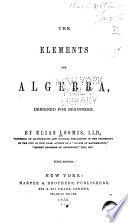 | Elias Loomis - Algebra - 1856 - 280 pages
...the sign minus. (63.) Hence all the cases of multiplication are comorehended in the following * RULE. Multiply each term of the multiplicand by each term of the multiplier, and add together all the partial products, observing that like signs require + in the product, and... | |
 | James Bates Thomson - Arithmetic - 1858 - 400 pages
...of the multiplier under the corresponding terms of the multipliiand. II. Multiply each term of thf multiplicand by each term of the multiplier separately,...write the first figure of each partial product one or more places to the right, under its corresponding denomination. (Art. 335.) III. Finally, add the... | |
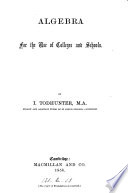 | Isaac Todhunter - Algebra - 1858 - 530 pages
...considering the above cases we arrive at the following rule for multiplying two binomial expressions. Multiply each term of the multiplicand by each term of the multiplier; if the terms have the same sign, prefix the sign + to the product, if they have different signs prefix... | |
 | William Smyth - Algebra - 1858 - 344 pages
...From what has been done we have the following rule for the multiplication of polynomials, viz. 1°. Multiply each term of the multiplicand by each term of the multiplier, observing with respect to the signs, that if two terms multiplied together have each the same sign,... | |
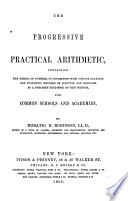 | Horatio Nelson Robinson - Arithmetic - 1859 - 348 pages
...of the indices of those factors ; thus 7' X 8' — 56" ; 4" X 5'" = 20"'". Hence the RULE. I. Write the several terms of the multiplier under the corresponding...of the multiplicand by each term of the multiplier, beginning with the lowest term in each, and call the product of any two denominations the denomination... | |
 | Horatio Nelson Robinson - Arithmetic - 1859 - 362 pages
...7' XV = 56" ; 4" X 5'" = 20"'". Hence the RULE. I. Write the several terms of the multiplier tinder the corresponding terms of the multiplicand. II. Multiply...of the multiplicand by each term of the multiplier, beginning with the lowest term in each, and call the product of any two denominations the denomination... | |
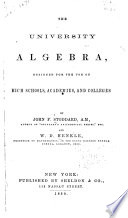 | John Fair Stoddard, William Downs Henkle - Algebra - 1859 - 538 pages
...Yaarjyd — Haxy~*c. CASE III. (91.) When both the multiplicand and multiplier are polynomials. RULE. Multiply each term of the multiplicand by each term of the multiplier, and add the products. PROBLEM. Multiply a' + 06 + 6* by a + 6. SOLUTION. Operation. a*+ a6 + 6' Multiplying... | |
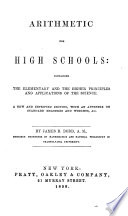 | James B. Dodd - Arithmetic - 1859 - 368 pages
...RULE XXXI. (132.) To Multiply one Duodecimal Polynomial by another. 1. Proceeding from right to left, multiply each term of the multiplicand by each term of the multiplier; mark each product term with the proper index (131), and set similar terms one under another. 2. When... | |
 | James Bates Thomson - Arithmetic - 1860 - 402 pages
...3.) 336, From these illustrations we have the following EULE FOR MULTIPLICATION OP DUODECIMALS. I. Place the several terms of the multiplier under the...multiplicand, and the highest in the multiplier, and m-ite ike first figure of each partial product one or more places to the right, under its corresponding... | |
| |